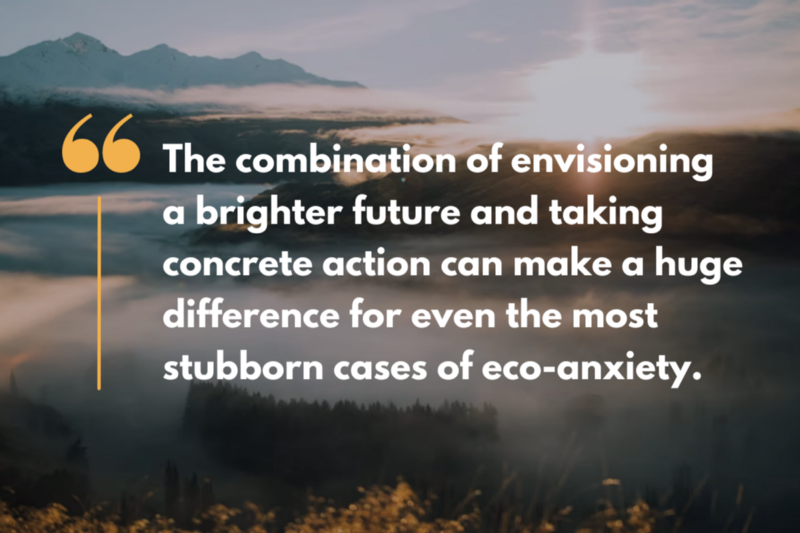Eco-Anxiety and Hope for the Future
Erica Dodds, Chief Operating Officer, F4CR
Living in a world rocked by climate change is hard. It’s hard because of the increasingly frequent extreme weather events, the burden of explaining our uncertain future to kids, and, for more and more people, the general sense of existential dread and anxiety that seems to constantly loom over us.
Psychologists have even coined a new term to explain this feeling: eco-anxiety.
In 2019, I gave a workshop on climate restoration to a group of a few dozen high school students at the Youth Climate Summit in Silver Springs, MD. In the workshop, I asked the students to take a moment to close their eyes and imagine what their lives might look like in thirty years, given everything they knew about climate change. When they opened their eyes, their faces were grim. I asked one student what she had imagined, and she said, “It just doesn’t seem like I’ll have a future.” The rest of the group agreed.
This sentiment is increasingly common among young people today, but it’s not only the young who are experiencing eco-anxiety. Parents and grandparents agonize about the world that we’re leaving to our children, and those without children worry that their legacies will be dire.
One reason eco-anxiety is so widespread is that a lot of our climate dialogue to date has taken the attitude that we need to scare people into action. If only people understood how bad things were, the thinking goes, they would eagerly make the changes needed to safeguard the world as we know it. Information about climate change has featured images of starving polar bears, wildfires, people wading through flooded neighborhoods, etc. These impacts are real and they are important to understand, but they can feel so overwhelming that any individual action seems insignificant and pointless in response.
In my workshop, I proceeded to teach the students about the goal of climate restoration and a few of the carbon dioxide removal (CDR) solutions that already exist and show incredible promise. I explained that although the situation is scary, it’s not too late to fix it. The challenge now is accelerating the development and implementation of effective CDR solutions while we continue to decarbonize our global economy. It won’t be easy, but it’s certainly not impossible.
Again, I asked the students to close their eyes and imagine their future in thirty years, but this time, taking into account the possibility of climate restoration. The difference was night and day. When they opened their eyes, they looked lighter. A few shared that they imagined camping and traveling with their families. Others said they felt energized and wanted to take action.

It’s important to talk about eco-anxiety because so few people are conscious they’re experiencing it. By spreading awareness, we can help normalize the fear and help people identify ways to take action to help combat it. Learning about the possibility of a brighter future can help change our outlook in the present and can give us more energy to bring that future into being. Similarly, taking action toward a healthy climate — by donating, volunteering, lobbying Congress, or just educating ourselves — can help to lift feelings of despair and hopelessness.
Learning about and working toward climate restoration is one of the most powerful ways to combat eco-anxiety. This new paradigm for our climate provides realistic hope as well as avenues to get involved. The combination of envisioning a brighter future and taking concrete action can make a huge difference for even the most stubborn cases of eco-anxiety. Join the Climate Restoration movement to get started.